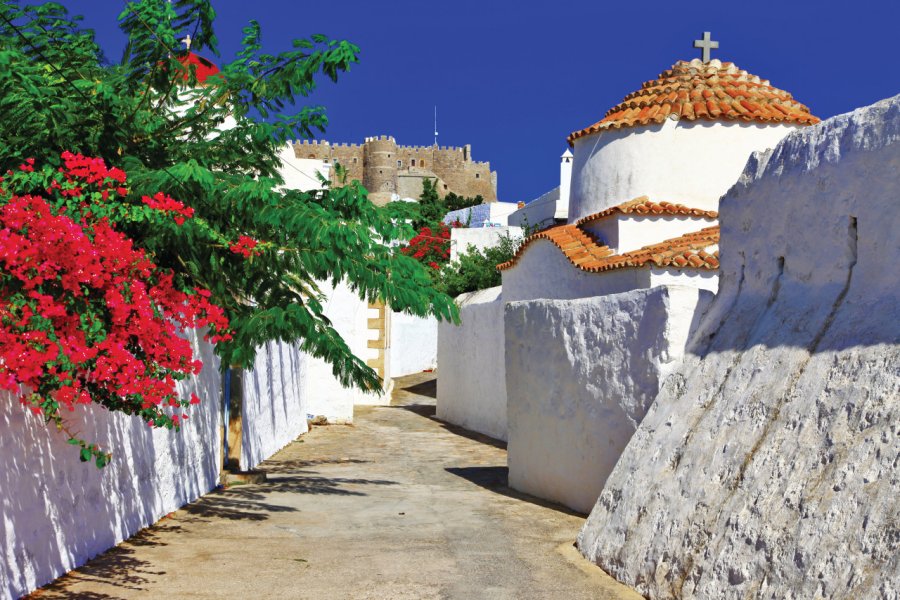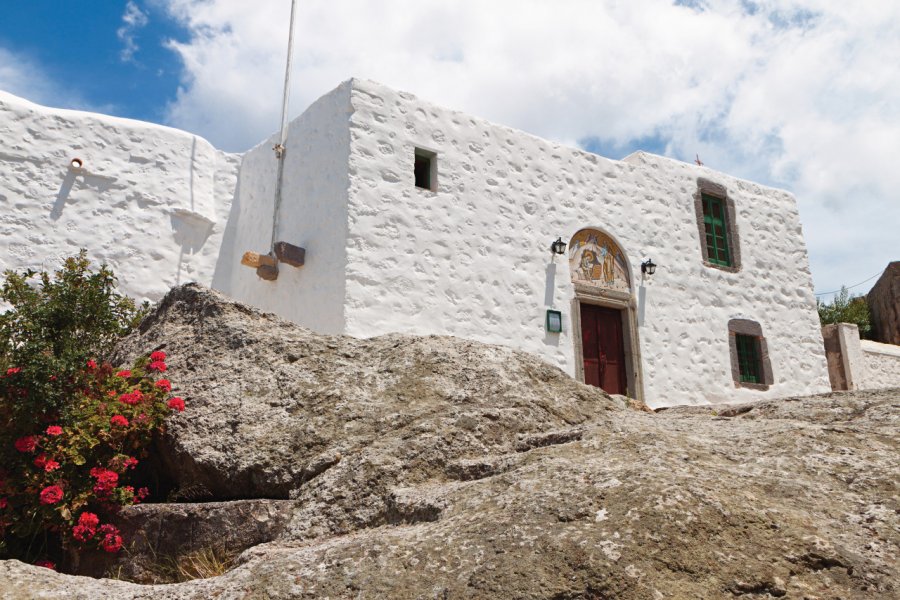Travel Guide Chora
Find an accommodation
Advertising
Chora is inextricably linked with the beginnings of Christianity: of course, the monastery of St. John the Theologian and the Grotto of the Apocalypse, both listed as UNESCO World Heritage Sites, are well worth a visit. You have to get lost and wander aimlessly around this fortified Byzantine city to catch snapshots, faces and silhouettes in the half-light of an open door. Labyrinthine, mysterious, even bewitched at nightfall, Chora exudes a unique atmosphere. Is it the imposing austerity of the monastery of St. John the Theologian or the blindingly secretive whitewashed alleyways that give this impression? You'll have to get to grips with them day and night to penetrate the closed world of Chora. The island's wealthy merchants and captains built sumptuous villas here from the 16th century onwards. But to avoid attracting thieves or the envious, the facades remained sober, identical to those of the city's most disadvantaged residents. Deserted by its inhabitants, Chora is still the island's capital, as evidenced by the pretty town hall square. Chora can be reached on foot via an ancient Byzantine stone path linking Skala to the Grotto of the Apocalypse and the monastery. Beware: the path climbs steeply and is not shaded. In summer, buses run between Skala and Chora every hour or so from morning to evening.
Weather at the moment
Advertising
Organize your trip with our partners Chora
Transportation
Book your plane tickets
Car Rental
Boat rental
Accommodation & stays
Find a hotel
Holiday rental
Find your campsite
Tailor-made trip
Immersion travel
Services / On site
Activities & visits
Find a doctor
Chora travel inspiration
Find unique Stay Offers with our Partners
Pictures and images Chora
Other destinations nearby Chora
5 km away
25 km away








